Growing up in Illinois, I knew the blooming of the forsythia bushes meant spring had arrived. The bright yellow flowers of the large bushes added a bright color to the gray of winter. This memory came to me as I enjoyed the yellow flowers of spring here in the Sonoran Desert. We had good winter rains, so I wasn’t surprised by the proliferation of flowers this past spring. However, I was taken by how the entire desert landscape seemed to have turned yellow.
Yellow, Yellow Everywhere!
Most of the spring yellow in the Sonoran desert was due to palo verde trees and brittlebush shrubs. I suspect there were other yellow-flowered plants as well, even though I may not be as familiar with them.
What else struck me is the question as to why in both temperature and desert environments, the spring flowers are yellow. Coincidence or was there a scientific reason for the similarity in colors? I did some research.
You might think nature is rewarding us with a bright, cheery color after a dreary winter. But no, the yellow colors are not for us, they’re for the pollinators, of course. Yellow is easily visible to pollinators such as flies, bees, and butterflies. The whole point of the flower is to attract pollinators.
Another possible reason is that yellow pigments are more easily produced by plants. Pigments, such as carotenoids and anthocyanins, can produce yellow colorations. The synthesis of carotenoids is fairly simple and energy-efficient, both important for plants.
Interestingly, anthocyanins can also provide protection against light exposure, acting like sunscreen. This could be very valuable in the bright sunlight found in the desert.
The Proof is in the Photos
In the photos below, the yellow-flowered trees are palo verde. These are probably Foothill Palo Verde (Parkinsonia microphylla). The other commonly found species in the Tucson area is the Blue Palo Verde (Cercidium floridum) which is usually close to water sources, like washes (although I question calling our usually dry washes water sources). The palo verde trees are known for their green trunks. A bit of trivia is that the palo verde was named the Arizona state tree in 1954.
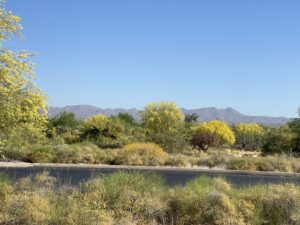
The yellow-flowered bushes or shrubs are brittlebush (Encelia farinosa), a member of the sunflower family. These shrubs tend to be rounded in shape. The yellow flowers contrast with the silver-gray leaves. But there’s still more!
The catkins of the mesquite Prosopis velutina.
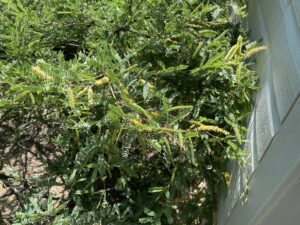
Yellow desert marigold, Bailleya multiradiata
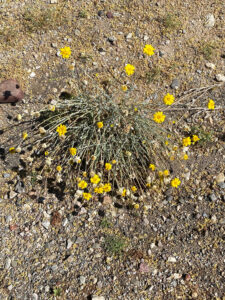
The whitethorn acacia, Vachellia (Acacia) constricta.
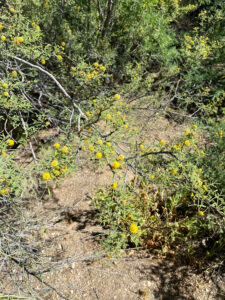
The remaining fruit of the fishhook barrel cactus, Ferocactus wislizenii.
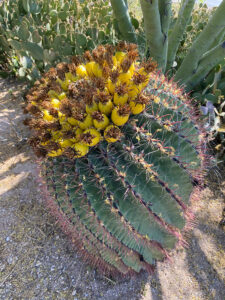
And many others, such as creosote bush, Larrea tridentata, and this Palo Verde tree. All bright yellow.
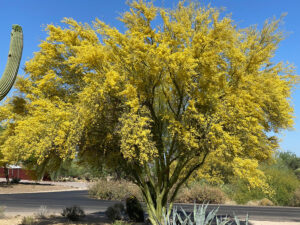
The season of yellow is fading, often leaving the ground covered with yellow petals.
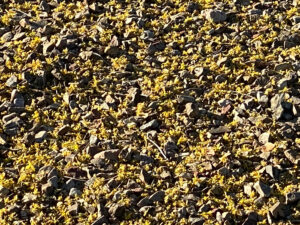
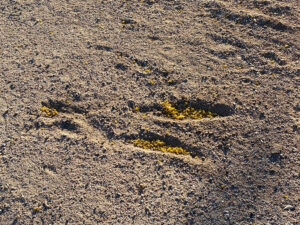
Now the white of the saguaro flowers, the deep reds of the cholla, and the pink of the ironwood trees are coloring the landscape.
It’s been a lovely yellow spring! If you enjoy learning about plants as much as I do, take a look at some plant books at Lyric Power Publishing!
